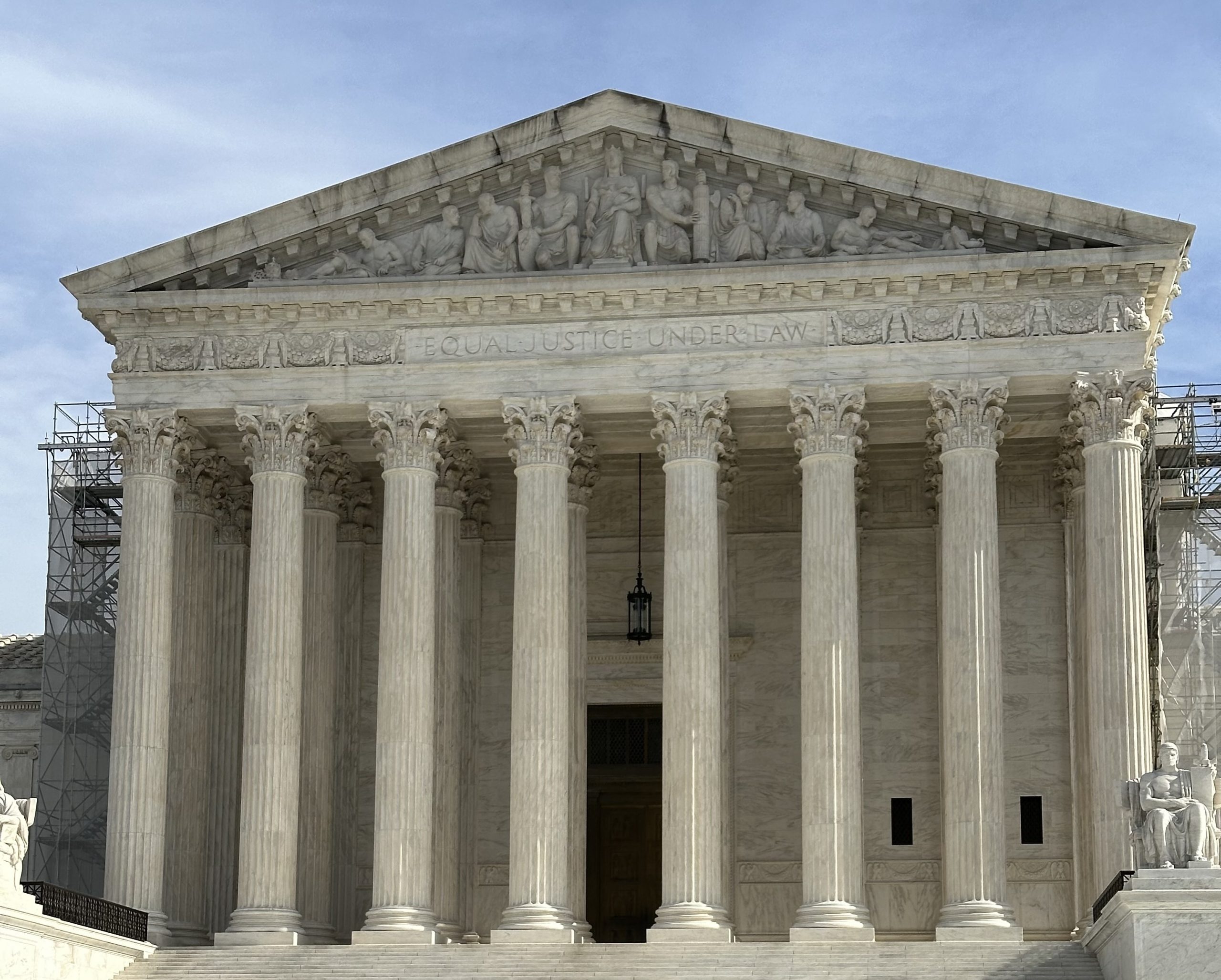OPINION ANALYSIS
Court sides with IRS on tax of shareholders’ life-insurance policies

on Jun 6, 2024 at 4:54 pm

Justice Clarence Thomas’s opinion for a unanimous court on Thursday in Connelly v. Internal Revenue Service resolved a pedestrian estate-tax problem for closely held corporations. The case presented a routine estate-planning device for those corporations, which commonly purchase life insurance policies on the principal shareholders. With the proceeds of such a policy, the corporation can purchase the shares of a dying shareholder from the shareholder’s estate, ensuring that the corporation remains in the hands of the original family.
The problem here is what to do with the value of those life-insurance proceeds, which flow into the corporation immediately after death. Do they make the corporation worth more than it would be without the proceeds (because they are money that the corporation holds) or do they leave the corporation at the same value (because they flow into the corporation just before the corporation spends them to redeem the shares of the deceased shareholder)?
As Justice Thomas explains, the court takes the former view. Here, one of the Connelly brothers (Michael) owned about 75% of the shares and the other (Thomas) owned about 25%. The brothers’ corporation was worth a bit less than $4 million as an operating business at the time of Michael’s death, so the family took the view that Michael’s shares were worth about $3 million (75% of $4 million). The IRS, though, took the view that the corporation was worth about $7 million, pointing to the additional $3 million in insurance proceeds, making Michael’s shares worth a bit more than $5 million (75% of $7 million).
But the court said on Thursday that “a simple example proves the point [that] an obligation to redeem shares at fair market value does not offset the value of life-insurance proceeds.” The court posits a corporation holding $10 million in cash and nothing else, with each of its 100 shares accordingly worth $100,000 ($10 million divided by 100). Suppose, it writes, that the corporation redeems twenty shares from one of the shareholders. “To redeem [the] shares at fair market value, the corporation would thus have to pay $2 million. After the redemption, A would be the sole shareholder in a corporation worth $8 million and with 80 outstanding shares. A’s shares would still be worth $100,000 each ($8 million ÷ 80 shares).”
For the court, that example pretty much resolves the case. “Because a fair-market value redemption has no effect on any shareholder’s economic interest, no willing buyer would have treated [the] obligation to redeem … as a factor that reduced the value of those shares.”
With the $3 million in life-insurnace proceeds, the court explains, “Anyone purchasing Michael’s shares would acquire a [80]% stake in a company worth $[7] million, along with [the corporation]’s obligation to redeem those shares at fair market value.” Therefore, the cost of Michael’s shares would be about $5.3 million (about 75% of $7 million) “i.e., the value the buyer could expect to receive in exchange for Michael’s shares when [the corporation] redeemed them at fair market value.”
The court readily dismisses Connelly’s argument “that the redemption obligation was a liability” as something that “cannot be reconciled with the basic mechanics of a stock redemption.” The court explains that a fair-market value redemption “necessarily reduces a corporation’s total value. And, because there are fewer outstanding shares after the redemption, the remaining shareholders are left with a larger proportional ownership interest in the less-valuable corporation.” It would “turn this ordinary process upside down” to treat the redemption as something that “left [the survivor] with a larger ownership stake in a company with the same value as before the redemption. … That cannot be right.”
The court closes by acknowledging Connelly’s argument that the decision “will make succession planning more difficult for closely held corporations.” It concedes that the point is “[t]rue enough,” but it points to a variety of transactional devices that might have worked better. In the end, though, it notes that “[e]very arrangement has its own drawbacks” and “its own tax consequences.” Because the arrangement the brothers selected “meant that [the corporation] would receive the proceeds and thereby increase the value of Michael’s shares,” the surviving brother must be taxed on that increased value.
I doubt this decision will have a major impact on the estate tax burden on the owners of closely held corporations. Even the court – certainly not the last word on creative tax planning – suggests a variety of mitigating strategies, and I have every reason to think that the highly skilled tax planners of our economy will find a way to solve this problem, either by transactional design or by an appropriate amendment of the tax code.


